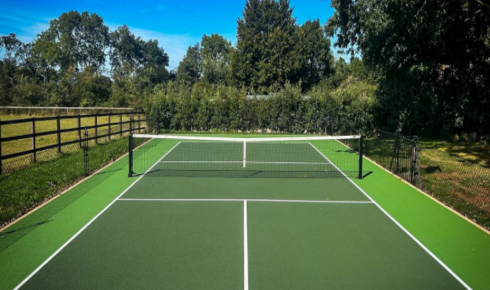Introduction
The popularity of skating—whether it’s roller skating, inline skating, or recreational skating—continues to grow across India in schools, sports complexes, and urban recreational spaces. But beyond the excitement and fun, one critical factor that determines the quality of any rink is the skating rink surface.
A smooth, durable, and safe surface is essential not only for high performance but also for injury prevention and long-term usability. In this blog, we’ll explore expert tips for skating rink construction, the best sports court flooring options, and why acrylic flooring materials are the go-to choice for modern skating rinks.
Why the Right Skating Rink Surface Matters
The skating rink surface plays a direct role in user experience and safety. Whether it’s an outdoor or indoor rink, the flooring must offer:
- Smooth glide with adequate grip
- Impact resistance
- Low maintenance needs
- Weather resistance for outdoor use
- Longevity under regular foot traffic and wheels
The right surface ensures skaters of all ages enjoy a safe and seamless ride, while facility owners benefit from low upkeep and durability.
Acrylic Sports Flooring Material
When it comes to constructing a professional or recreational skating rink, acrylic flooring materials top the list due to their versatility and strength. Commonly used in sports court flooring, acrylic offers a blend of smoothness, resilience, and aesthetic appeal.
Why Acrylic Flooring is Ideal for Skating Rinks:
- Smooth & Consistent Surface for skating flow
- UV-Resistant for outdoor rinks
- Non-Slip Texture for safety in all weather conditions
- Low Maintenance compared to other materials
- Available in Vibrant Colors for a fun, sporty vibe
Acrylic surfaces are already popular for basketball, tennis, and multi-sport courts—and their benefits translate perfectly to skating as well.
Step-by-Step: Skating Rink Construction Process
Constructing a high-quality skating rink requires planning, precision, and the right material choice. Here’s a step-by-step breakdown:
Site Preparation
- Site selection, leveling, and cleaning
- 21–28 days curing for concrete surface
Surface Priming
- Application of primer for bonding acrylic layers to concrete
Acrylic Resurfacer Application
- Levels and smooths the base
- Fills minor cracks and imperfections
Texture or Cushion Coats (Optional)
- Adds skid-resistance or shock absorption, especially for beginner-friendly rinks
Top Color Coats
- Multiple coats in high-quality acrylic materials
- Durable, vibrant finish that resists wear
Skating Rink Surface: Maintenance Tips
To keep your acrylic skating rink surface in top shape:
- Regular cleaning with soft brooms or water
- Avoid harsh chemicals that may erode the surface
- Schedule annual inspections to address minor repairs before they worsen
- Re-coat every 3–5 years for continued performance and aesthetics
Acrylic Skating Rinks vs Traditional Flooring
| Feature | Acrylic Flooring | Asphalt/Concrete Only |
| Surface Smoothness | High | Low |
| Safety | Slip-resistant | Prone to skids |
| Weather Resistance | Excellent | Poor |
| Aesthetic Appeal | Vibrant & Customizable | Dull & Basic |
| Maintenance | Low | High |
Acrylic flooring not only enhances safety and performance but also elevates the overall look and value of the facility.
Applications of Acrylic Skating Rinks
- Schools & Colleges
- Recreational Parks
- Skating Academies
- Residential Societies
- Sports Complexes
Due to the flexibility of acrylic systems, they can be customized in terms of color, size, and layout to match different project needs.
Conclusion
A well-constructed skating rink surface using acrylic flooring materials is a smart investment for anyone looking to offer a smooth, safe, and visually appealing environment for skaters. Whether it’s a standalone rink or part of a larger sports court flooring project, acrylic provides unmatched quality and versatility.
With proper planning and professional installation, your skating rink can deliver performance, safety, and fun for years to come.


